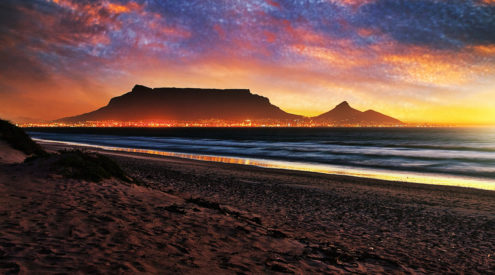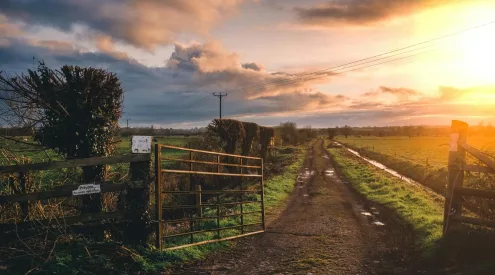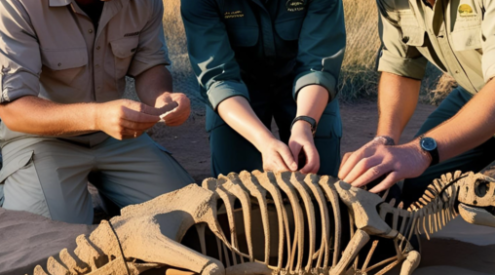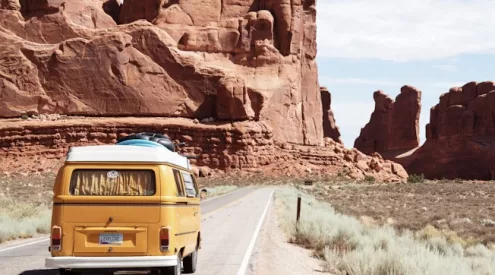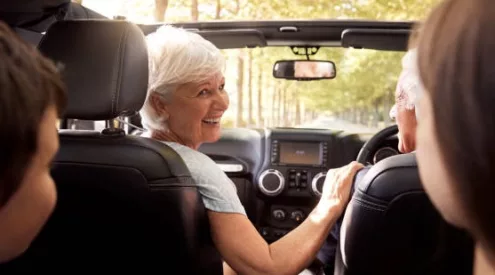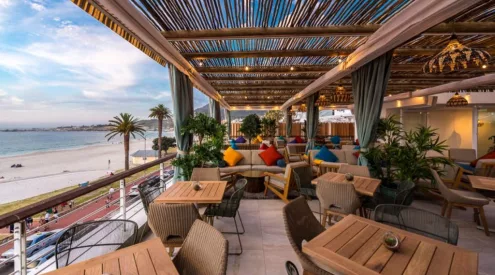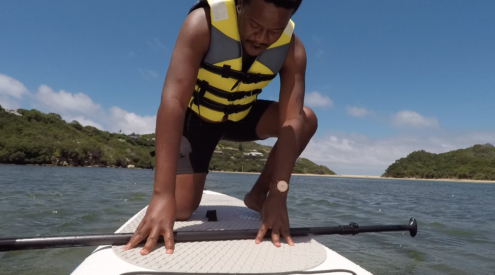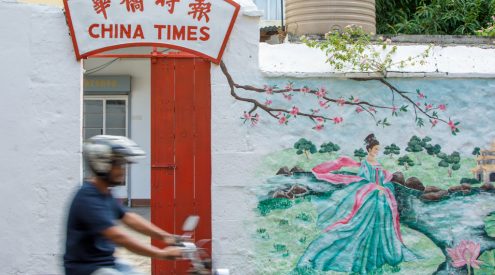On 10 April 2013, at approximately 09h00, I began a 3000-kilometre road trip in search of traces of pre-historic life in South Africa and Lesotho with Dale Morris, a freelance photojournalist and writer. He was given the duty of finding fossil sites in these two countries for an upcoming feature in Getaway magazine and I, an intern at Getaway, was sent to assist him with equipment, and learn about travel journalism from an experienced pro. Bianca Preusker, a tour guide from Cape Town, completed the team.
Our first destination was Karoo National Park in the Western Cape. We took the N12 route from George towards the town of Beaufort West. The 274-kilometre drive took us three hours to complete.
Beaufort West
In Beaufort West, the reality that we were now in the Karoo, one of the driest areas in South Africa, hit me. Established in 1818, the town has given birth to a few well-known people including the man who pioneered heart-transplant surgery: Dr Chris Barnard. We were now swallowed up between mountains in an area where the grass doesn’t grow long enough to reach your ankles. I pulled out a bottle of water and downed it as I stared at the thirsty Karoo soil. However, despite my refusal to share my water with it, the Karoo welcomed us with warm hands. The cracks on the semi-arid landscape appeared to be smiling as we entered the Central Karoo town. We were greeted by rondavels covered with otherworldly artworks as we drove down Banthom Road towards Pick & Pay. The arid soil of the town has hatched a community where art breathes life into the dry Karoo days. It’s not hard to see why this town will soon house the biggest painting in the world, a collaborative project by African artists. The artwork will be placed east of the Beaufort West Dam. However, the most fascinating artwork we saw around in the town was the Nuweveld mountain range. We drove hastily towards the Karoo National Park so we could see the mountain at a close range, but first we had to go through Oudtshoorn.
Oudtshoorn
Established in the 1800s, Oudtshoorn has become well-known for ostrich farming, something that caught my eye as we entered the town. I had never seen so many ostriches in my life! Once you’ve seen the ostriches, it’s hard to imagine that there are any other activities in town. Although the ratites dominate, the town is also home to the bushman rock art site: Cango Caves. Unfortunately, we could not explore Oudtshoorn, we had to reach Karoo National Park before dusk so we could snatch a few photographs at sunset.
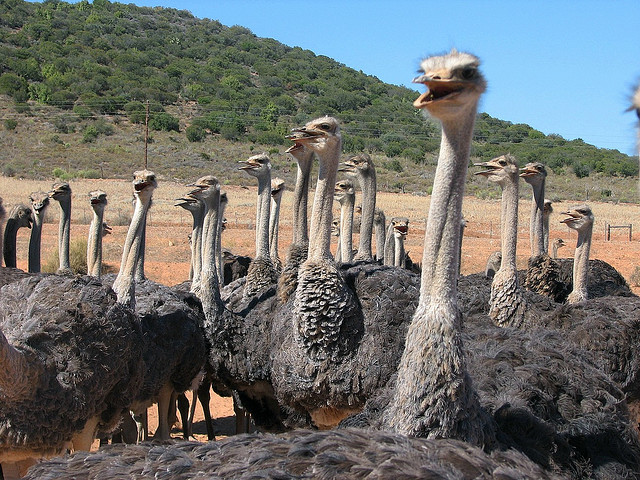
Ostrich in Oudtshoorn. Image by Kerron
Karoo National Park
After settling in at one of the chalets in the 88 000-hectare Karoo National Park, we took a game drive. Dale suggested that taking a drive around the park would familiarise us with the area before digging up our fossils story. On the route we encountered large herds of zebra, kudu and wildebeest grazing around the route. We drove deeper into the park and met a klipspringer couple. At first, the couple seemed to be aware of our presence in the area and made a few alarm calls, but after a few minutes, the animals were willing to pose for a photo shoot as they danced in the bushes. We marvelled at this sight for a few minutes, froze it on our cameras and drove back to the chalet.
On the way back, we encoutered an orange-eyed owl. Dale, armed with his camera, climbed to the top of the car to take photographs of the photogenic owl. A few minutes later, the owl flew away and we headed back to the chalet.

A klipspringer at the Karoo National Park. Image by Bianca Preusker
Early on day two, yawning and half-asleep, we headed on the Karoo National Park Fossil Trail to gather information about the fossils in the park. We then sought the services of the guides at the park. Unfortunately, we couldn’t find an expert on the Karoo fossils but the guides were willing to help. As soon as the tour started, Dale brandished his Blackberry and began taking notes while asking questions around the fossils. I too learned a few things about fossils in the area: The semi-arid Karoo was once a flood plain that supported pre-historic life. Yes, a floodplain. At first this was hard to accept but Johan, the tour guide, explained how the climatic and geomophological altered the Karoo into its current state. Secondly, the area did not have any dinosaurs. The area only had mammalian reptiles which became extinct as soon the climatic conditions changed. That’s millions of years ago.
After the interview, Dale took a few photographs of the fossil trail and the geology of the area. After spending just 48 hours with him, I had also learned a few things about travel journalism …
What I learned
Familiarise yourself with an area before you begin your research. Information about the weather, smell or geology of the area may come in handy in the story.
Take as many photographs as possible. Every shot counts.
Check the environment, climatic factors and light situation before taking photographs.
There is no right way to capture information in travel writing. You can take notes using your phone (like Dale), a notebook or a dictaphone.
Main image by Scott Ramsay: Year in the Wild
Looking for a place to stay in the Karoo? Check out Getaway Accomodation for accommodation options in Oudtshoorn and Beaufort West.

